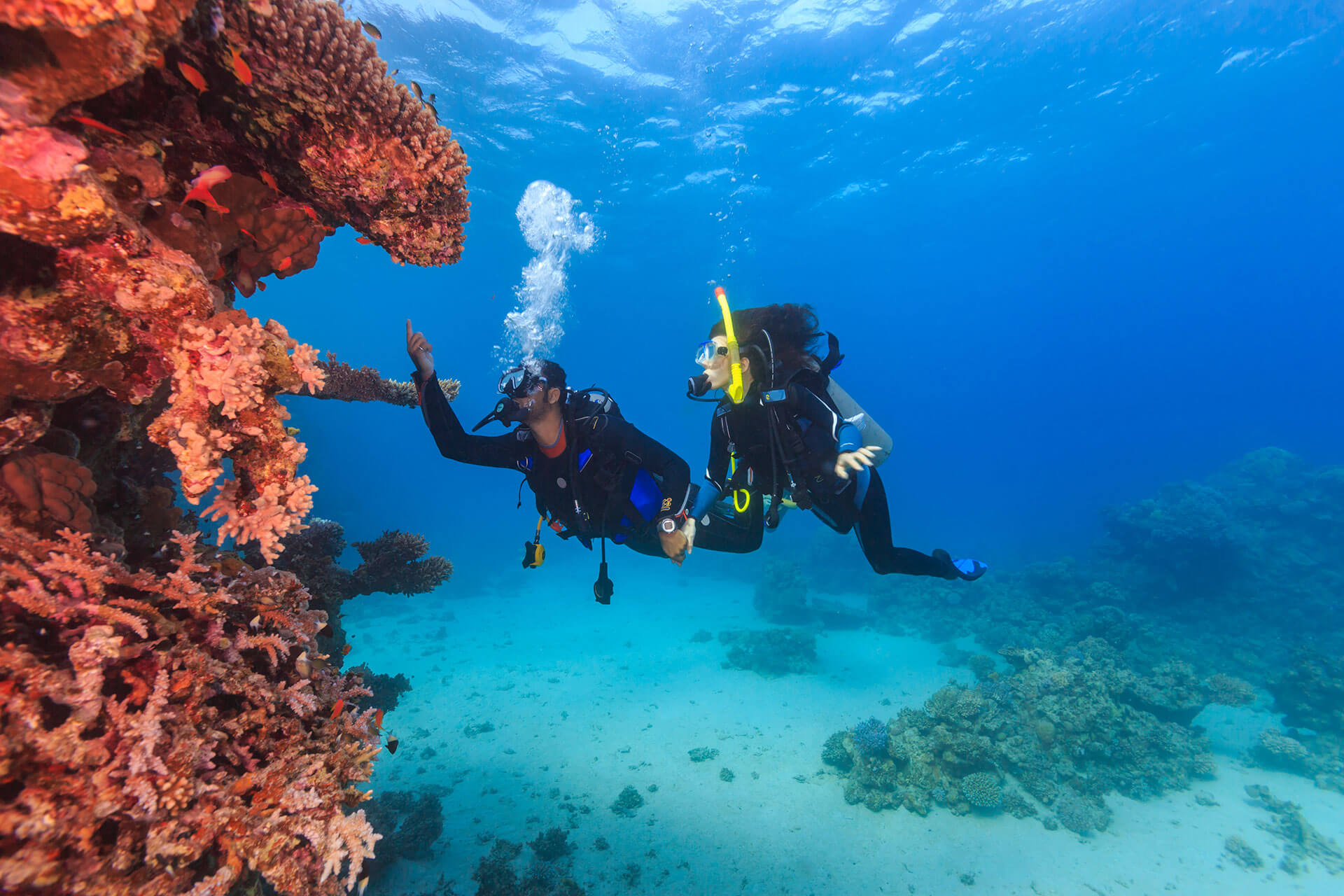Choosing the right Mask for your underwater adventures.
There are many factors to getting the best fitting dive mask, these areas much to do with your intended use of the mask as they are with how the mask is constructed.
FIT is the main factor and should trump all others when selecting your mask
Usage, what kind of snorkelling or diving will you be doing? Someone who is regularly SCUBA diving to great depths may have more need of an ultra high quality mask than someone going for the occasional surface snorkel outing.
Construction and quality, what is the mask made of and how will this affect your experience in the water?
Where to buy? Preferably from a shop where the staff use what they sell and can help you in selecting the best mask for your needs.
Tips and tricks to get the most from your gear!
Starting with mask fitment, as it’s the most important step in choosing your next mask we need to understand that everyone’s faces are different. Different shapes, sized noses, distance between eyes and curvature of the forehead.
Key note for freedivers and spearfishers that you will want to look for all of the below features but also try and get the smallest volume mask possible to help with equalisation
Looking at different masks on the shelves of your favourite outdoors store you will notice that some are wide, some are narrow and will all have different lens shapes. Now thing of your own face and which size of mask may fit best? Then start there.
Once you have a mask in your hands (or a few of them) that you think looks like it should fit your face, the next step is to hold the mask against your face without using the mask strap and inhale through your nose. The mask should suck onto your face and stay there until you release your breath. This means that the mask will seal to your face well and prevent water from entering while in use.
If the mask doesn’t suck onto your face, try re adjusting it (make sure you haven’t got it too high or too low on your face or try another mask. They won’t all fit.
Once you’ve found a mass or masks that have a good seal to your face the next step is to now try them on with the strap (with a light amount of tension only) and keep them on for few minutes to feel for any discomfort. Try pressing around the frame of the mask especially along the top edge to make sure no hard parts of the mask push anywhere on your face and could cause discomfort. Key places to keep in mind are the bridge of your nose and lower part of forehead roughly level with your eyebrows. Any pressure here can result in all sorts of headaches and discomfort.
If the mask seals well and causes no discomfort, then you are well on your way towards your next dive!
Usage and construction can go hand in hand as the more you use the mask the more you will want to spend to get top quality construction.
There are a few main materials used to make snorkel and dive masks. These are plastic, pvc, rubber, silicone and tempered glass.
Cheaper snorkel masks will often be made from plastic frames and lenses with pvc or rubber skirts (soft section around mask that seals it to your face). These snorkel masks are not suitable for SCUBA so definitely look towards a better mask if you think you may like to dive deeper. Worth noting is that the pvc (often referred to as something else for marketing purposes such as silitex) skirts on cheaper masks often do not seal to faces as well as a silicone mask.
Scuba masks which are also well suited to snorkelling also will be constructed of a silicone skirt that will be softer than its cheaper counterparts and result in a much better fit and seal. These masks will have a tempered glass lense or lenses that can withstand much higher pressure safely. A nice thing to know is that for the better quality masks you can normally buy spare parts for them should you wear any straps or adjusters out over time.
Our recommendation is that where budget allows, any mask you buy should be silicone with a glass lense.
Where should you buy your new mask? Your nearest Dive or Outdoors store that stocks quality brands and will have staff to assist you in trying them on until you find your perfect fit. If you buy your mask online make sure that store has a physical location to go into should you order the wrong one and need help with exchange for a better fit.
Some top brands of underwater gear are, Mares, Scuba Pro, Hollis, Oceanic, Cressi, Zeagle, Rob Allen and Salvimar. There are other great brands out there but we recommend making sure the store you purchase from stocks at least two of these brands so that you have a decent range to select from.
To get the most out of your mask purchase there’s a few things you can do!
- To help prevent fogging, we recommend treating the mask to remove a film left on the inside of the GLASS lense when made with a silicone skirt. You can burn this film off with a lighter or use toothpast to scrub it off however our recommendation is to use the cleaning product JIFF and a clean dry chux cloth to scrub hard on the INSIDE of the lense. This will take a good 15 to 30 minutes and will be done when the cloth makes a squeaking noise wherever you rub on the inside lense. Then rinse the mask thoroughly to remove all traces of jiff.
- Also to help with fogging, Each time you’re about to take a dip in the water you’ll want to coat the inside lense to assist in keeping it fog free. You can purchase the special anti fog sprays that are made specifically for this and come in really convenient pump action spray bottles or you can use spit. Another great option is a small drop of johnsons baby shampoo. After spraying, spitting or dropping a small amount of the anti fog of your choice into the mask, scrub it around the inside lense with your finger and rinse out the excess, leaving a small amount evenly coating the lense. Put your mask on and get going!
- Mask straps! These can get uncomfortable and even affect the seal of your mask if worn incorrectly. Be sure that the strap is just tight enough to keep the mask against your face. Any tighter and it can cause problems like headaches or affect how the mask sits, letting in water. For those with long hair we r=suggest buying a neoprene strap cover and tying hair into a plait. Your mask strap should not be touching any part of your ears, if it is then you need to pull it up higher on the back of the head for a more comfortable fit.
- Storage! When finished with you dive, be sure to rinse your equipment thoroughly with fresh water then allow to dry in the shade. Once dry store in a clean tub or bag out of direct sunlight or extreme heat. A quality mask looked after in such a way has an indefinite lifespan.
- Moustaches! If your find that masks tend to let a little water in around the fuzz of your top lip, consider shaving the moustache or just the top 2mm below the nose, this can greatly assist with the integrity of the seal. Another thing to try is a small amount of silicone grease, like that used for underwater camera housings, smeared into the facial hair will help create a seal without damaging the skirt of the mask like some other products like Vaseline might do
Now all that’s left is to head to your local spots and enjoy the treasures of our oceans! If you need suggestions on where to go in WA check out our top snorkel and dive spots post HERE




